Best Bone Broth for Carnivore Diet: Top Picks & Benefits
1. Benefits of Bone Broth for the Carnivore Diet
Bone broth is a highly nutritious liquid from slow-simmering connective tissues and animal bones. It is made from poultry, pork, or cows and forms a stock for soups, gravies, and sauces.
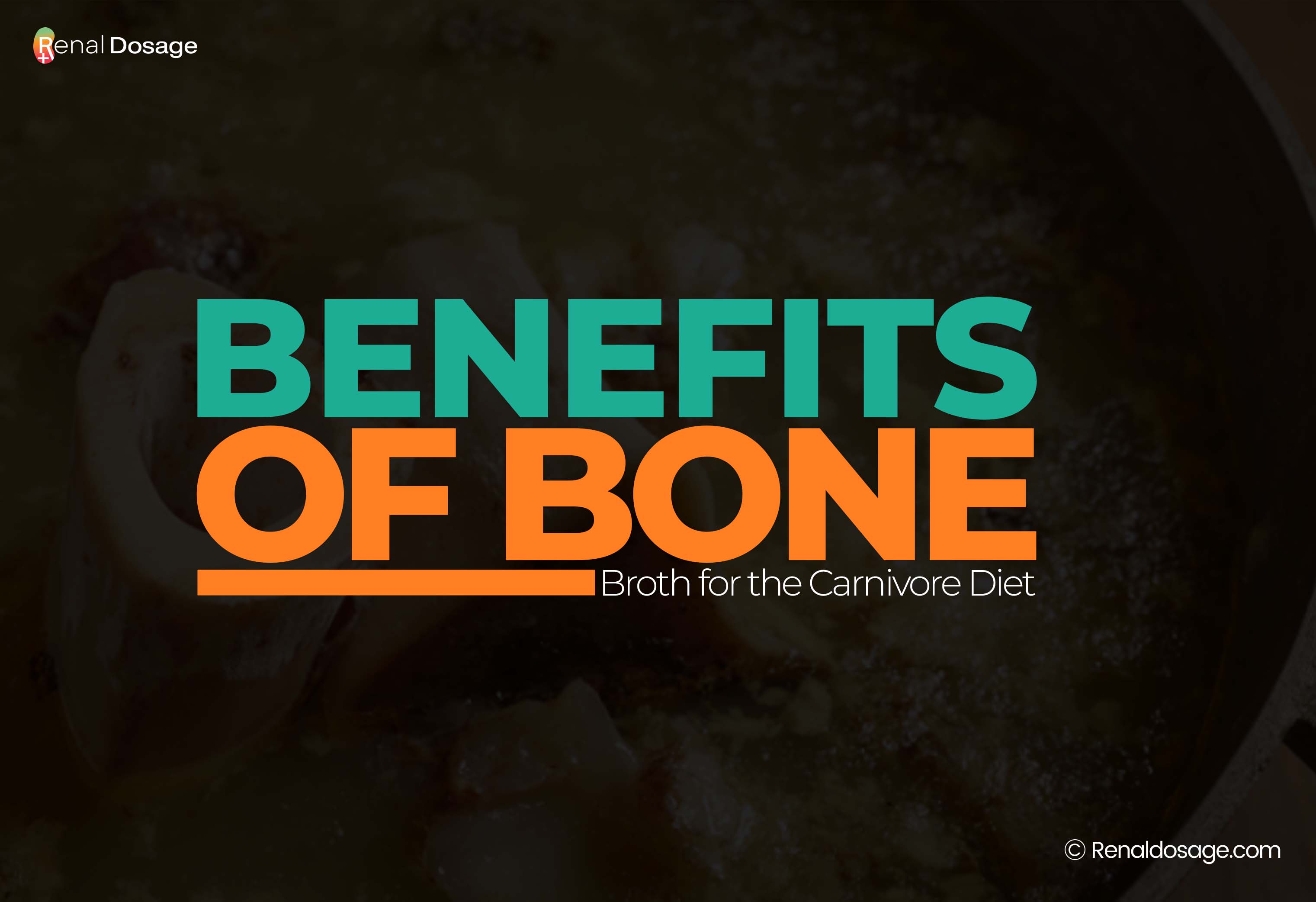
Rich Profile of Amino Acids
Bone broth is rich in essential amino acids, such as glycine, proline, and arginine, essential for building and repairing tissues and promoting peaceful sleep. Research published in Frontiers in Neurology also shows that a low glycine dosage, 3 g/day, is directly linked with improved sleep quality and reduced fatigue. Proline, another essential amino acid, is vital for collagen biosynthesis, which maintains the integrity of connective tissues such as skin, bones, cartilage, and tendons.
Supports Gut Health
Bone broth supports the gut lining by providing digestible nutrients, including collagen, gelatin, glycine, and glutamine. A study published in PubMed also highlighted that glutamine supports the intestinal barrier by maintaining the health of the mucosa and lowering the amount of bacterial translocation. Similarly, gelatin strengthens the lining of the intestines, supports a healthy mucus layer, prevents a "leaky gut," and repairs the gut.
Immune Boosting Properties:
Bone broth also boosts the immune system with various nutrients, including calcium, magnesium, phosphorus, vitamins, and trace minerals. It acts as a natural immune booster, helping the body absorb nutrients quickly and assisting in immunity. A study published in PubMed also highlighted that proline in bone broth makes up 17% of the amino acids in collagen. It concluded that proline controls biochemical processes that help cells grow. Thus, proline is a key part of the immune system and the healing of wounds.
Low-carb Compliance:
Bone broth is low-carb, containing minimal or 0g of carbs, making it ideal for keto and carnivore diets. It is a carnivore-friendly snack due to its 0g carbs and animal-derived ingredients. Due to its low carbs, bone broth is compatible with intermittent fasting, ketogenic, paleo, dairy-free, and gluten-free diets. One ounce of beef bone broth gives 4.8 calories, with 2% protein and 0% carbohydrates.
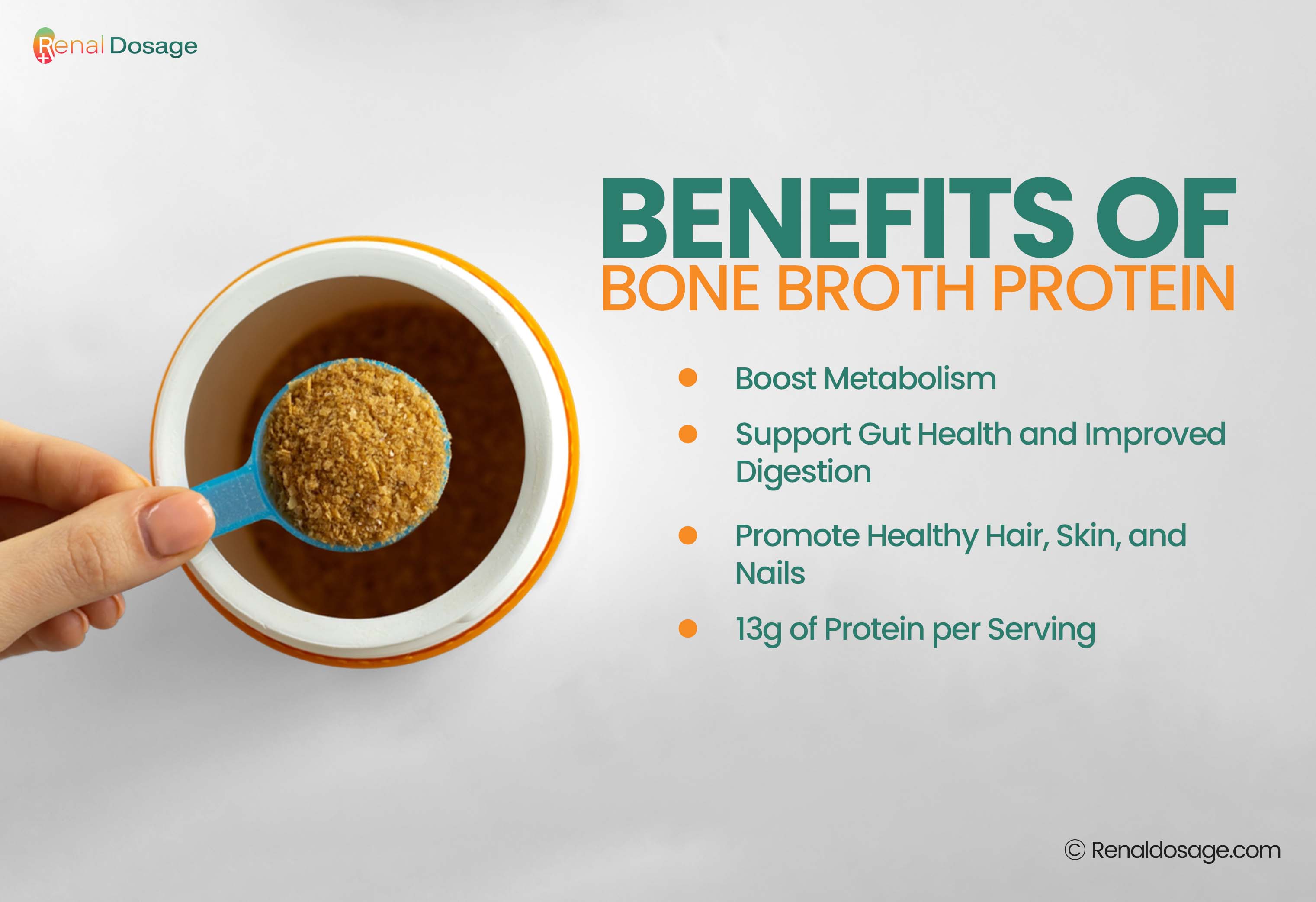
Anti-Inflammatory Effects:
Glycine and arginine in bone broth also show reduced anti-inflammatory markers. A study published in the International Journal of Molecular Sciences highlighted that glycine's anti-inflammatory effects are caused by changing the production of nuclear factor kappa B (NF-κB) in many cells. Although glycine is not an essential amino acid, it is beneficial for avoiding chronic inflammation.
Key Components of Bone Broth
The main components of bone broth include gelatin, glycine, proline, glutamine, and essential minerals. It also contains type 1 collagen, which is beneficial for the skin and joints, and type II collagen, which is valuable for maintaining cartilage composition.
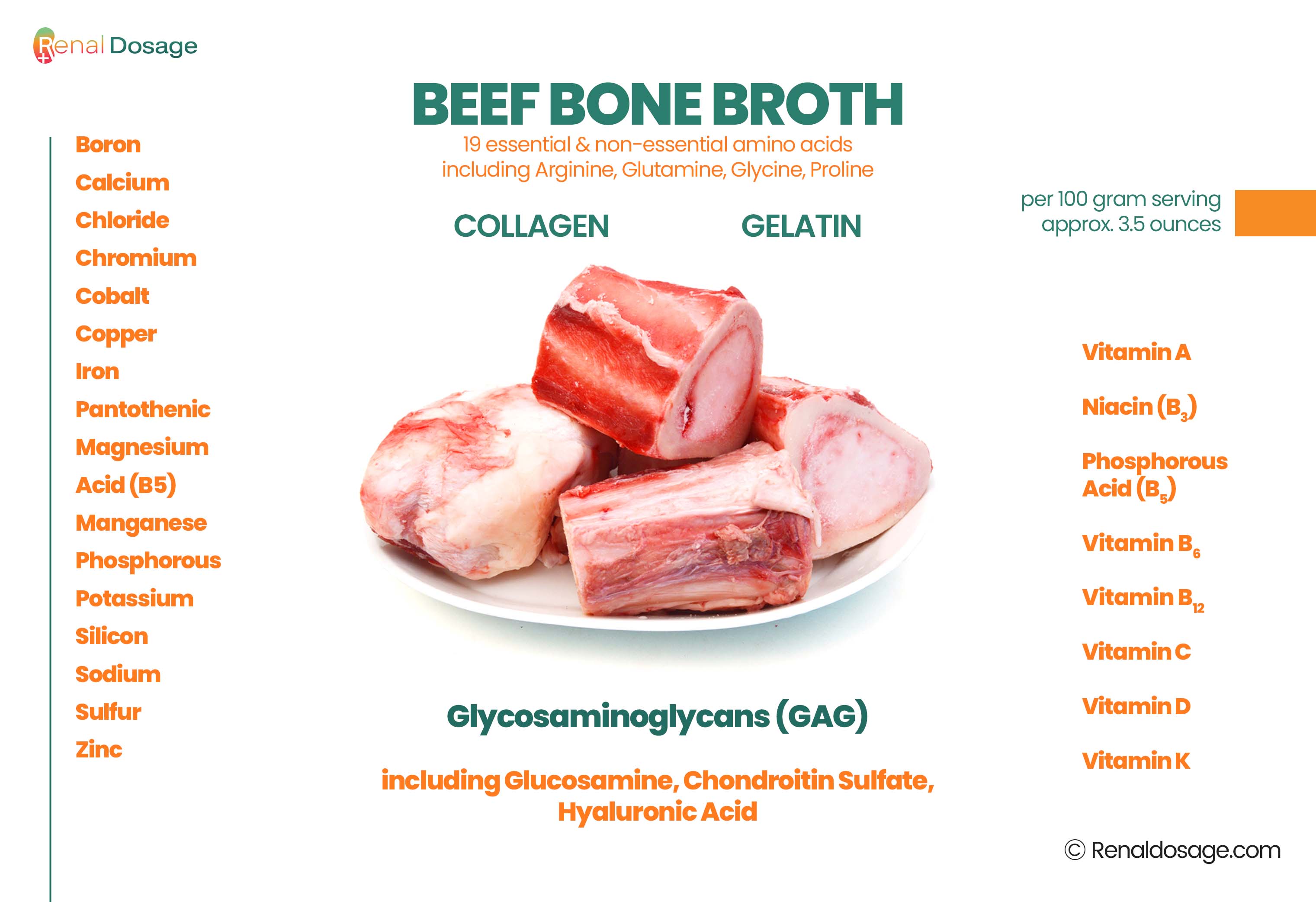
Gelatin:
Gelatin, a form of partially hydrolysed collagen is made when the collagen in bone broth is simmered. This is why bone soup turns into Jell-O consistency when it's cold. It contains essential amino acids like proline and glycine, essential for the building and strengthening of connective tissues. Gelatin protects the mucus layer of the gut and prevents pathogens, viruses, and other harmful bacteria from entering the body. The gelatin in bone broth is also beneficial to fight food sensitivities like gluten and lactose by releasing good bacteria to live in the gut.
Glutamine
Bone broth benefits gut health and provides glutamine, an essential amino acid. Your intestinal cells use glutamine as a key nutrient to strengthen your intestinal barrier and lower inflammation in the gut. These two benefits are very important to maintain the walls of gut health. Larger food proteins or harmful bacteria may enter the bloodstream when the gut lining is damaged. It is known as "leaky gut." If you have a leaky gut, your immune system might react abnormally. Such reactions can lead to food sensitivities and trigger autoimmune diseases. The Medical News Today also highlighted that L-glutamine supplementation is also helpful in reducing bloating, especially related to gut health, such as irritable bowel syndrome (IBS) and leaky gut syndrome.
Glycine:
It is another amino acid that helps build protein for the maintenance of tissue and hormones. It also aids the health of the heart and liver, lowers the risk of diabetes, and improves sleep quality. Glycine is present in small amounts in bone broth that promotes relaxation and restorative sleep. The body naturally produces glycine but can also be obtained from protein-rich foods and dietary supplements. A study published in PMC highlighted that low-dose consumption i.e., about 3g/day before bed is beneficial to improve sleep quality with reduced fatigue and sleepiness during the day.
Proline:
Proline is also an amino acid found abundantly in bone broth and plays an essential role in improving skin health by increasing collagen production. It also plays a major role in the proper functioning of tendons and joints in the body and strengthens the muscles of the heart. Additionally, proline takes part in cartilage repair, repairing of muscles, skin damage and connective tissues. A study published in the Journal of Biosystems also highlighted that the deficiency of glycine, proline and lysine may be the main cause of osteoarthritis as they play essential roles in the synthesis of collagen.
Minerals
Animal bones are rich in minerals such as calcium, magnesium and phosphorus which are essential for building and strengthening bones. However, bone broth constitutes a small amount of these minerals, i.e., less than 5% of DV. Bone marrow also provides omega-3s, omega-6s, iron, selenium, and zinc with small amounts of vitamins including A, B, E, and K. The USDA shared that one cup of bone broth contains 12 to 68 mg of calcium per 250 ml cup size which makes about 1% of the daily recommended value.
3. How to Make Bone Broth
These are the ingredients of bone broth and the choice of meat depends on availability and personal preference.
Ingredients:
- Water (1 gallon, 4 litres)
- Apple cider vinegar, optional (2tbsp, 30 mL)
- 1-2 kg animal bones (2-4 pounds of chicken, beef or pork)
- Salt and pepper to taste
Directions:
Boil the ingredients in a slow cooker or large pot. Roast the bones before simmering them. Lower the flame and the ingredients for 10–24 hours before allowing it to cool. Check the consistency and add salt or thyme to add flavour. Strain through a piece of cloth and pour into smaller containers for storage.
Follow these steps to make bone broth in a carnivore diet.
Bone Selection:
It is essential to choose the right bones for making bone broth for enhanced flavour and nutrition. Choose bones from
- Marrow Bones: Provides essential fats and nutrients.
- Knuckle Bones: Bones such as feet or neck are rich in gelatin and give a silky texture to broth.
- Meaty Joints: Animal joints such as chicken back give robust flavour with a high nutritional profile.
You can also choose high-quality bones by staying within your budget by buying them from local butchers or farms. It is a cost-effective way to source fresh and sustainably raised options. Roast the bones first to add extra depth of flavour and easier to brown. Choose a slow cooker, add all ingredients and allow it to simmer.
Research published in the Journal of Foods 2019 highlighted that grass-fed beef bones yield more collagen as compared to pasture-raised.
- Simmering Duration:
The duration of simmering depends until it is done and the tastebuds and the colour of the broth. Practically, 18-24 hrs are sufficient to simmer the bones to extract all nutrients and proteins. You can also simmer bones for more than 12-24 hours to enhance the taste and flavour of bone broth.
- Acidic Medium:
During simmering, add 1 tbsp apple cider vinegar to make an acidic medium in a bone broth. It contains citric acid that dissolves calcium deposits and enhances flavour. Adding apple cider vinegar to bone broth is also beneficial in breaking down the collagen to make it more abundant in the broth.
- Storage and Reheating Tips
When the bone broth is cooked, check its consistency depending on personal preferences. You can also store it in a freezer to preserve its nutrients. As compared to other preservation techniques, freezing broth from high temperatures preserves its nutrients. It makes it ideal for bone broth to maintain its nutritional value without changing its texture. In freezing techniques, most nutrients such as collagen and essential minerals remain stable. During freezing, some vitamins may degrade slightly but you can minimise vitamin loss by proper freezing techniques. These are some ways to properly store bone broth to use in the future by preserving its nutrients and minimising its mineral loss. Consider these four effective methods to free bone broth.
- Use ice cube trays to manage bite-size portions of bone broth.
- Vacuum sealing bags are ideal for storing bone broth for longer and also minimise nutrient loss.
- Freezer bags are a cost-effective solution to freeze the bone broth, preserve its quality, and lower freezer burn.
- Glass containers with proper lids are reusable and free from chemicals, ideal for storing bone broth to perfectly fit in a freezer.
You can freeze the bone broth in the refrigerator for 5 days and three months in the freezer.
To reheat, pour the required amount of broth into the cooker or any dish and slowly heat it using the microwave or the stove.
Reducing bone broth for storage: You can also simmer the broth on the stove over low heat until it is reduced by half, freezer space. As it simmers, you will notice a few bubbles. Note that the broth must be diluted with water before being used in the freezer container.
- Avoidable Mistakes:
Avoid these common mistakes when making bone broth.
- Skipping the blanching
- Skipping roasting the bones
- Adding unnecessary ingredients like onion, garlic pepper for aroma
- Using a smaller cooker or stockpot
- Not simmering the bones properly
- Cooling cooked broths slowly
To make a healthy, nutritious and flavourful bone broth, avoid these common mistakes.
4. Best Store-Bought Bone Broths
While buying store-bought bone broths, always check the ingredient list and third-party certifications such as USDA Organic and Paleo Foundation to ensure they meet specific standards. Below are some top bone broth brands for the carnivore diet.
Fond Bone Broth:
Fond is a brand that sells verified regenerative bone broth and tallow in the market. It is cost-effective, improves gut healing and supports the overall immune system. Fond bone broth is gelatinous and completely free from gluten, sugar and fats with verified third-party certifications. One jar of bone broth gives 20 g of protein and various trace minerals. Thus, it is a healthy and safer option to buy bone broth from stores to ensure sufficient nutrient intake.

Kettle & Fire Bone Broth:
Kettle and fire bone broth is made with 100% organic ingredients and bones from grass-fed cows. Their ingredients are simmered for 20+ hours to extract maximum collagen, proteins and amino acids. It supports gut health and contains 82% collagen in protein content. The bone broth from Kettle and Fire gives 10 grammes of protein, 300 mg of sodium and 40 calories per serving cup.

Brodo Bone Broth
It is considered a homemade broth, made with long-simmered bones. It contains glutamine, packed with collagen-rich amino acids and also acts as an electrolyte in a carnivore diet. Brodo is the best solution to get a protein-packed snack or high-quality nutritious broth for soups and sauces at home. It ensures a balance between meat and bones and gives them a delicious flavour. A cup of Brodo bone broth gives 10 g of protein and 5 g of carbohydrates per cup. Brodo bone broth has a high average rating of 4.3 out of 5 stars on Amazon, with 428 reviews.
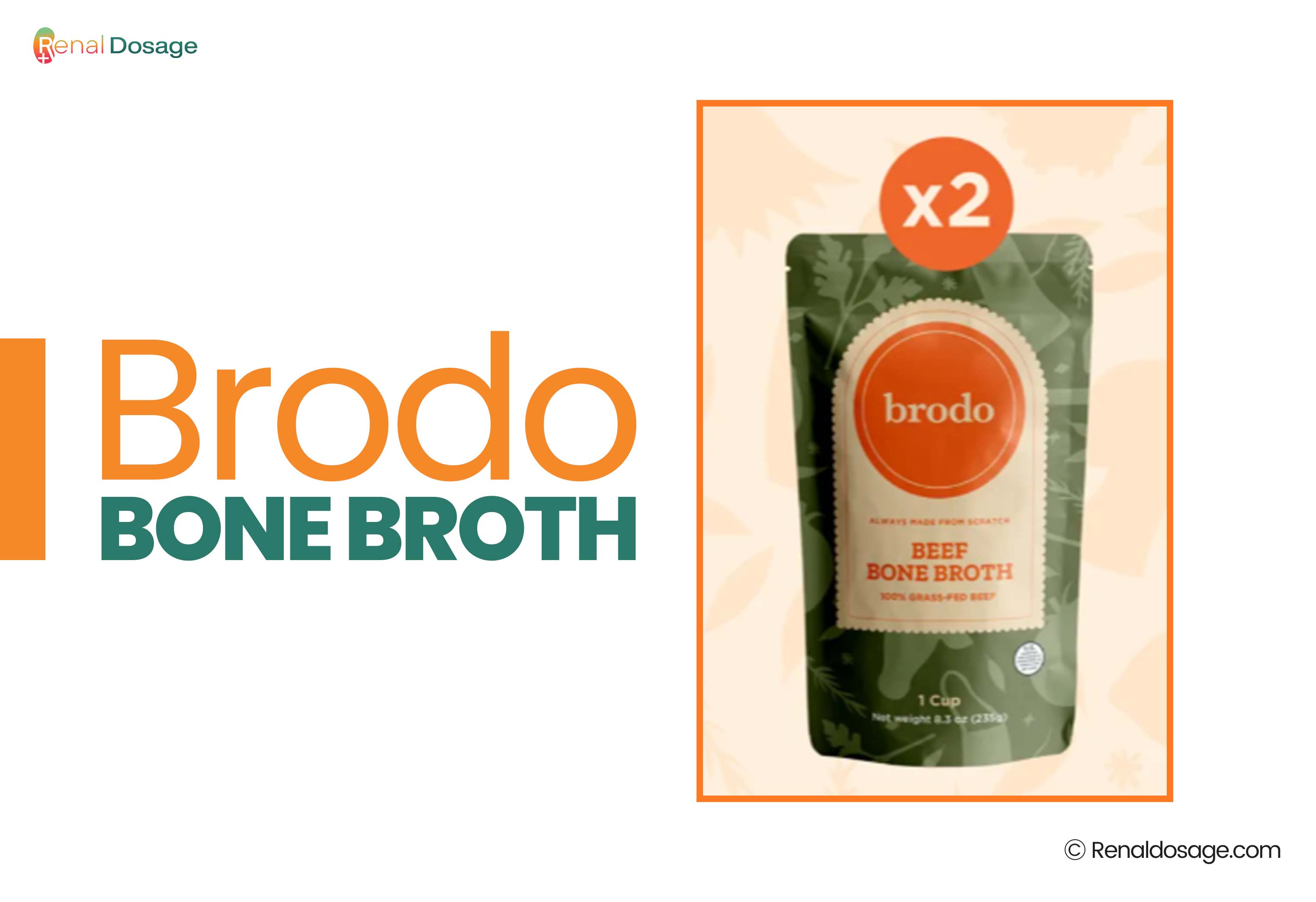
Ancient Nutrition:
Ancient Nutrition bone broth is a concentrated form that contains chondroitin, hyaluronic acid and glucosamine. It provides the best source of collagen that promotes joint comfort and mobility. It is also well-known for skin health, healthy gut function and a healthy immune system. The serving size of 1 scoop of bone broth gives 100 calories, 172 mg and 193 mg of potassium.
It gives 2 times more micro and macronutrients than the other bone broth brands and is more powerful nutrient rich than homemade broth. Ancient Nutrition bone broth also ensures twice as much protein as the leading bone broth brands.
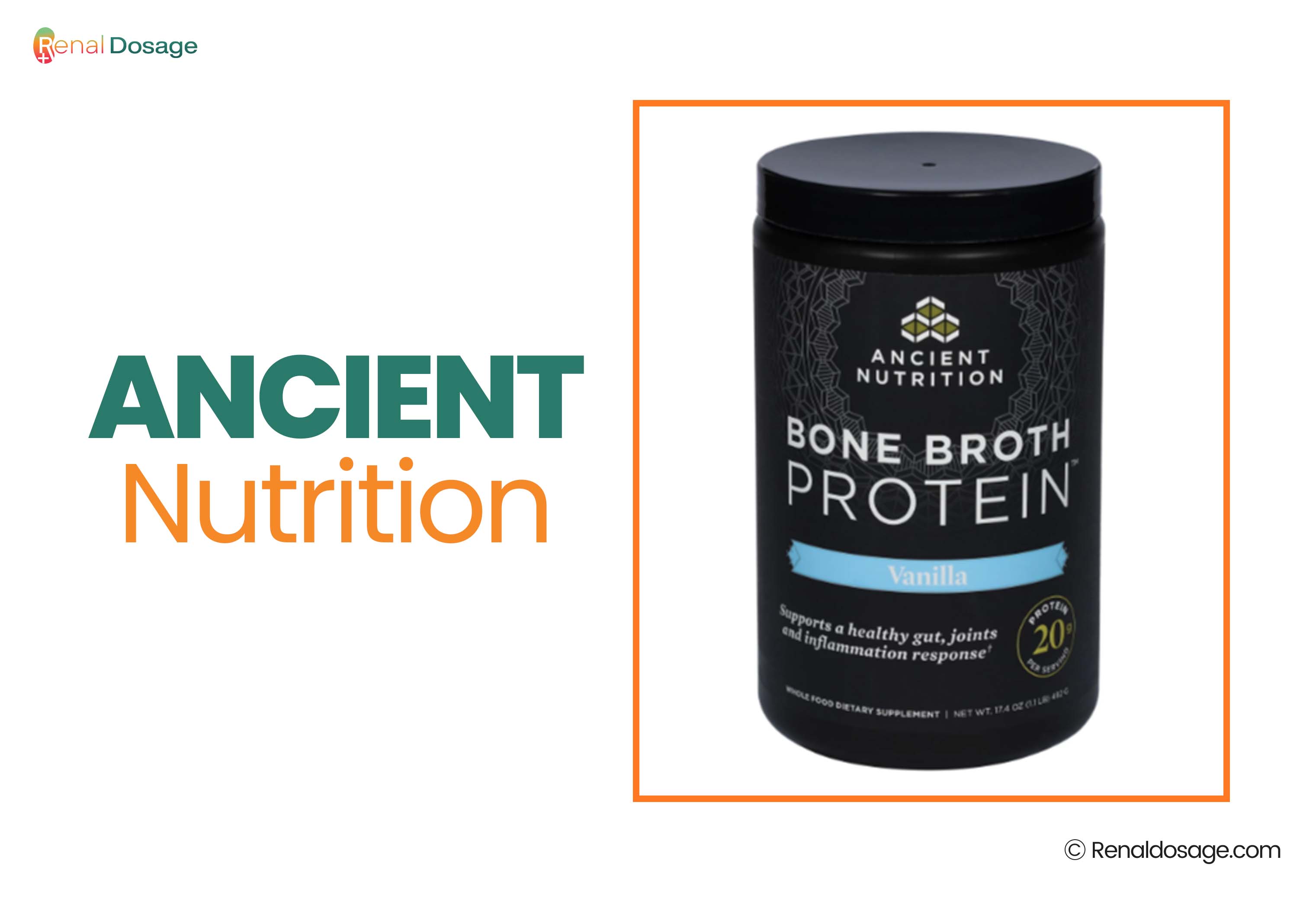
How to Check a Quality Criteria of Bone Broth
- Quality Criteria:
To check the quality criteria of bone broth, look for gel-like consistency, which shows collagen content. Always opt for high-quality broth made with natural organic ingredients.
- Gelatinous Texture
A key sign of high-quality bone broth is that when it is refrigerated, it solidifies or turns into gelatin. The gel-like consistency guarantees the presence of collagen, which dissolves from the slow-simmered bones and is an essential nutrient in bone broth. However, not all broths solidify and convert into a gel-like consistency.
- High-Quality Ingredients:
Choose bone broth made with organic, grass-fed ingredients and look for bones such as knuckles, chicken feet, or oxtail, as these contain more collagen. Ensure the proper simmer time (at least 6 hours and ideally longer) to get the maximum nutrients.
- Flavour and Sensory Qualities
High-quality bone broth is ideally rich, clear, and golden yellow and gives a savoury, meaty aroma. The overall taste should be mild and umami.
- Storage and Shelf Life
You can also freeze bone broth for extended periods (12-24 months) without losing quality. In the refrigerator, it can last for several days if stored properly. Throw away bone broth that changes its colour, slimy texture, or gives a foul smell.
Incorporating Bone Broth into the Carnivore Diet
There are many ways to incorporate bone broth into a carnivore diet. Below are some easiest ways to consume bone broth in daily meal integration while following a carnivore diet.
Serving size
A commonly recommended serving size of bone broth is about 1 cup (237 ml) per day. Many people ask “Can I drink bone broth daily on carnivore?" So, the answer is yes, it is allowed in the carnivore diet if sodium-controlled.
However, some people also consume more than 2 cups of bone broth daily. Bone broth contains sodium, and people with hypertension should avoid consuming excess broth. The American Heart Association (AHA) recommends limiting sodium intake to 2,300 milligrams (mg) per day.
Bone Broth Risotto Recipe
It is a healthy meal option that provides various essential vitamins and minerals.

|
Ingredients: |
|
|
For stock |
For broth |
|
|
Directions
- Add all ingredients to a high-pressure cooker, cook manually for 60 minutes, and then allow the pressure to release slowly. Strain the solid.
- If you're cooking on the stove, let it simmer on low for 5 to 6 hours. Then, strain out the solids and set the soup away.
- Over medium-high heat, brown the onion or shallot in a large pot or saucepan until it is soft and begins to turn red.
- Toast the rice for three to five minutes, or until it turns brown.
- Then start with the broth. With a 1-cup spoon, add one scoop at a time and stir until it is mixed well. Add one scoop of broth and shredded meat, stir until it's absorbed, and add more. Risotto is done when the texture of the rice becomes soft and creamy.
- Grate the cheese and add the thyme leaves. Season with salt and pepper to taste.
Hydration:
Bone broth is rich in essential minerals that help restore electrolytes in the body. The high water content in broth ensures hydration because water makes up to 70% of body weight. One cup of bone broth ideally gives
- 50 calories.
- 0.5 grams (g) of fat.
- 9 g of protein.
- 280 milligrams (mg) of potassium.
- 450 mg of sodium.
- 5 g of carbohydrates.
- Broth replaces electrolytes (50mg potassium/cup).
- Convenience:
For overall convenience, bone broth in powder form is generally more convenient than liquid or other forms such as Vital proteins. With powdered form supplements, it is easy to store, travel with, and incorporate into various recipes and drinks.
- Pairings:
Bone broth, when paired with bone marrow gives a synergistic effect and gives fat-soluble vitamins including Vitamin A, D, E and
2. Tips for Daily Use
Bone broth can be a nourishing addition to your daily routine. Consuming bone broth daily is beneficial for improving gut health and gives joint benefits. You can also consume it during meal preparation, fasting and post-workout to get the maximum nutrients.
- Morning Ritual:
In the morning, try having a cup around 8 am. Drinking bone broth in the morning fits with the natural cortisol rhythm, giving your body a warm, gentle wake‐up boost.
- Post-Workout:
After a workout, enjoy a cup of broth to aid muscle repair. With 15 grams of protein per cup, it offers the building blocks necessary for recovery.
- Fasting:
While fasting or following a ketogenic diet, bone broth is beneficial to provide energy and maintain ketosis. Since it contains 0 grams of carbohydrates, it helps you stay in ketosis while providing essential nutrients.
- Budget Tips:
When planning meals, consider buying bones from local butchers, who often sell them for about 2–3 dollars per pound. It is a more budget-friendly option than purchasing retail options.
- Flavour Enhancement:
To control the sodium in a diet, you can add salt after cooking to enhance the flavour of your meal instead of adding it while cooking. It also allows you to adjust the saltiness according to individual preference while boosting the natural flavours of the meal. You can also add aromatics to enhance the natural flavour of bone broth like onions, garlic, carrots, and celery.
